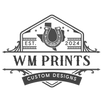The realm of healthcare is continually evolving, driven by technological advancements that promise better treatment outcomes, personalized medicine, and cost-effective healthcare solutions. Among these innovations, 3D printing stands out as a transformative force that is revolutionizing how medical professionals approach patient care and treatment.
The Rise of 3D Printing in Medicine
3D printing, also known as additive manufacturing, creates three-dimensional objects by layering material based on a digital model. Its ability to produce complex and customized structures has captured the imagination of the medical community, leading to unprecedented applications in healthcare.
Custom Prosthetics and Implants
One of the most impactful uses of 3D printing is in the creation of custom prosthetics and implants. Traditional prosthetics often require weeks to manufacture and can be prohibitively expensive. 3D printing overcomes these barriers by allowing for fast production of custom-fit prosthetic limbs tailored to the individual's unique anatomy. This not only improves the comfort and functionality for patients but also significantly reduces costs.
Surgical Models and Planning
Surgeons are increasingly using 3D printed models of patients' anatomy to plan complex surgeries. These models, created from the patient's own imaging data, offer a tangible representation of the surgical site, allowing surgeons to simulate procedures and anticipate potential challenges before ever making an incision. This pre-operative visualization improves surgical outcomes and enhances patient safety.
Bioprinting and Tissue Engineering
Though still in its early stages, bioprinting represents the frontier of 3D printing in healthcare. By layering living cells in a structured manner, researchers are developing functional tissues and organs. While the ability to print entire organs for transplantation remains a future goal, current research is focused on creating tissue constructs that can aid in drug testing and disease modeling.
How to Implement and Innovate
3D printing technology in healthcare is facilitated by tools like the Lyman Type Prep Tools Holder, which are indispensable in the preparation and organization of intricate devices needed during the printing process. Precision and efficiency in these preparatory stages are crucial to the successful application of 3D printing in medical environments.
Future Perspectives
While the adoption of 3D printing in healthcare is still expanding, its potential applications are vast and varied. As technology continues to advance, it will likely lead to even more revolutionary breakthroughs, driving forward the capacity of healthcare providers to offer more personalized and effective patient care.
To explore more about the integration of 3D printing technology across different sectors, visit WM Prints.
By embracing 3D printing, the medical industry stands on the brink of a new era of possibilities, limited only by the imagination and ambition of its innovators.





